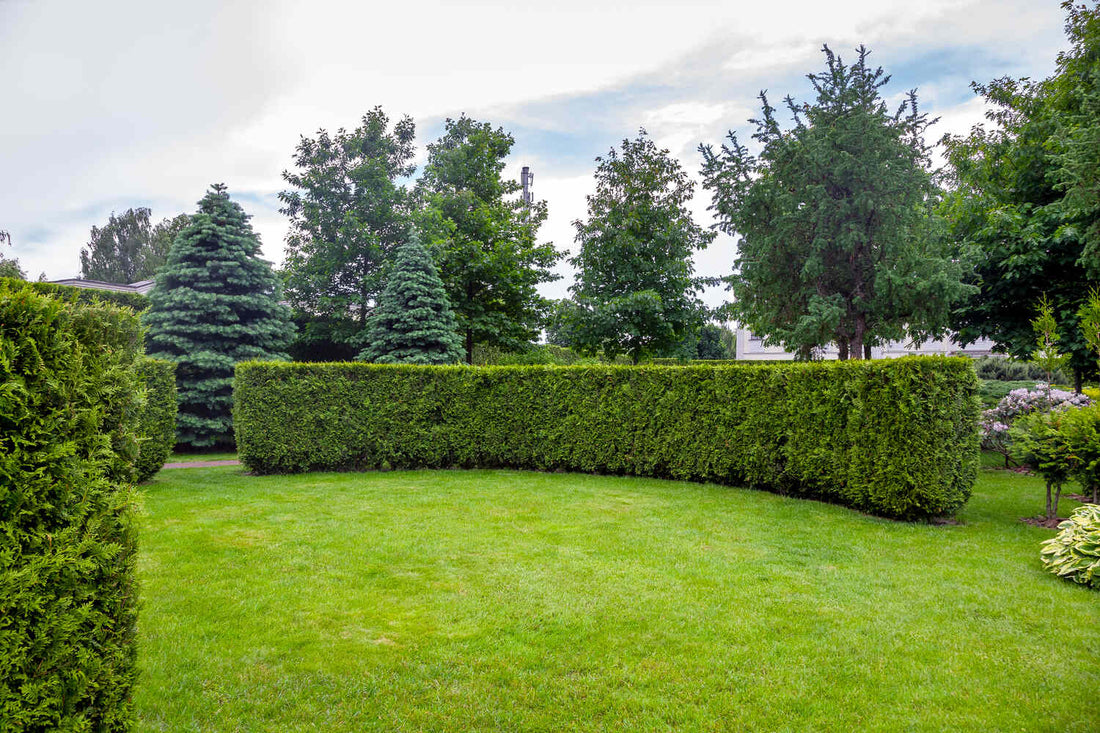Wondering when to water after pre emergent? Good question—because the answer can make or break your weed control plan.
Timing your watering correctly after applying pre-emergent herbicide is just as important as the application itself.
Skip it, or do it too late, and you risk losing all the protection you just put down.
At Lawn Synergy, we work with homeowners who want consistent, professional-grade results without the frustration of unreliable outcomes.
Our customers expect high performance with DIY control—and that's exactly what we deliver. That's why we not only provide enhanced, nutrient-packed products, but also expert guidance to help you get every step right.
Looking for more answers! Check out our guides on “can you apply pre emergent and fertilizer at the same time” and “how long after pre emergent can I seed?” for more information.
Let's walk through when and how to water after applying pre-emergent, so you lock in the barrier that keeps weeds out and your lawn looking like it belongs on a magazine cover.
What this article covers:
- Why Watering Matters After Pre-Emergent Application
- Ideal Timing for Watering After Application
- How Much Water Does Pre-Emergent Need?
- Best Practices for Watering In Pre-Emergent
- What If It Rains After Application?
- Common Mistakes to Avoid When Watering
- Product-Specific Watering Guidelines
- Signs That Your Pre-Emergent Was Watered Correctly
Why Watering Matters After Pre-Emergent Application
The Role of Water in Activating Pre-Emergent
A pre emergent herbicide is only as good as their activation. Without water, the product just sits on the soil surface.
It won't form the protective barrier needed to stop weed seeds from sprouting.
Water pushes the active ingredient down into the soil's upper layer—where weeds germinate. Whether you're applying a granular or liquid pre-emergent, water is the switch that turns it on.
What Happens If You Don't Water It In?
Simple: the product fails. If you let it sit dry for days, wind, foot traffic, or mowing can scatter it before it ever gets a chance to work.
By the time rain finally shows up, it could be too late. The barrier won't be even, and weeds will sneak through. That's why water isn't optional—it's required for success.
Ideal Timing for Watering After Application
How Soon Should You Water for Best Results?
You should water immediately after applying pre-emergent. Within 24 hours is the ideal window—sooner is even better.
Waiting longer increases the risk of uneven coverage or herbicide loss due to wind or physical movement. A quick watering locks the product into place and ensures activation starts on time.

Should You Wait After Applying Granular or Liquid Formulas?
Both granular and liquid forms need water. With granular pre-emergents, watering is even more important because the granules must dissolve into the soil.
Liquids may look like they're ready to work right away, but even they need that first irrigation to truly activate. Bottom line: don't wait. Get that water on as soon as you're done applying.
How Much Water Does Pre-Emergent Need?
Recommended Water Volume Per Square Foot
Pre-emergent herbicides generally require about ¼ inch of water to activate properly. That works out to around 0.15 gallons per square foot.
If you're using a sprinkler system, this usually takes about 20–30 minutes of steady watering depending on your system's output. Use a rain gauge or tuna can to check the amount.
Deep Watering vs. Light Irrigation
Don't overdo it. A light, even soak is better than a deep watering.
You're aiming to push the product into the top ½ inch of soil—not to flood it out or drive it too deep where it won't be effective. Stick to short, controlled irrigation cycles for the best activation.
Best Practices for Watering In Pre-Emergent
Using Sprinklers vs. Natural Rainfall
Sprinklers give you control, which is ideal. Relying on rainfall is risky unless it's in the forecast within 12–24 hours.
Even then, a light drizzle might not be enough. A heavy downpour could wash product away. If possible, use your own irrigation system or hose-end sprinkler to get consistent coverage.
How to Adjust Watering Based on Soil Type
Clay soil retains water longer, so you can water a bit less. Sandy soil drains quickly and might need a little extra time.
Loamy soil—the sweet spot for lawns—responds well to the standard ¼ inch. Know your soil and adjust accordingly.
This is where Lawn Synergy can help with tailored recommendations based on your soil profile.
What If It Rains After Application?
Light Showers vs. Heavy Rain Scenarios
Light showers after application? Perfect. They help activate the product gently and evenly. Heavy rain, though, can be a problem.
If you get over an inch of rainfall shortly after applying, the herbicide may leach out or become unevenly distributed. In that case, a reapplication might be needed.

When You Should Reapply or Wait It Out
If your lawn gets hit by a heavy storm (think thunderstorm downpours) within six hours of applying pre-emergent, watch for signs of patchy weed growth over the next couple of weeks.
If weeds break through in certain areas, it's likely the product washed away, and spot reapplication may be necessary.
Common Mistakes to Avoid When Watering
Overwatering That Washes Product Away
More is not better. Too much water can push the herbicide deeper than intended or run it off completely—especially on sloped lawns or compacted soil.
Stick to the recommended volume and avoid irrigation systems with strong runoff patterns.
Letting Product Sit Too Long Before Watering
This is a top mistake. Waiting a few days gives wind, animals, foot traffic, or mowing time to scatter your pre-emergent before it's ever activated.
Apply, then water. Don't schedule them on separate days unless you absolutely have to—and even then, make sure watering happens within 24 hours.
Product-Specific Watering Guidelines
Differences Between Prodiamine, Dithiopyr, and Other Actives
Prodiamine is a slow-release pre-emergent that needs consistent moisture to activate and stay effective. Dithiopyr activates quickly and can bind well to soil—but still requires initial watering to kick in.
Other active ingredients vary, but the rule remains the same: water right after application to lock it in.
Following Manufacturer Labels for Watering Timelines
Always read the label. It'll tell you exactly how much water is needed and how soon to apply it.
Our products include easy-to-follow guides and personalized support, so you're never left guessing. Need help adjusting for your lawn type? Just ask—we're here to help.

Signs That Your Pre-Emergent Was Watered Correctly
Soil Absorption and Surface Residue Check
Check the lawn after watering. The soil should feel damp to the touch but not saturated. If you still see dry granules on the surface, it didn't soak in enough.
On the flip side, puddles mean you may have overdone it. Aim for that just-right, evenly moist soil.
Weed Prevention Indicators Over the First Few Weeks
If your pre-emergent was applied and watered in correctly, you'll start seeing fewer weeds breaking through as the weeks go by.
If weeds show up evenly across the lawn, the herbicide likely wasn't activated. If they appear in patches, uneven watering might be to blame.
Conclusion
Watering after pre-emergent isn't just a follow-up step—it's a core part of your weed control strategy.
Knowing exactly when to water after pre emergent can mean the difference between a lawn full of weeds and one that stays clean and green all season long.
At Lawn Synergy, we provide not only professional-grade products enhanced with the nutrients your lawn needs—we also offer expert guidance to help you apply them correctly.
We don't just sell you a bag and walk away. We support you with mixing, timing, and application rates, so your results are consistent and impressive.
Ready to take the guesswork out of your lawn care? Let's do it together—the synergy between you and Lawn Synergy is what makes a perfect lawn possible.
If you want to learn more, check out these articles below:
-
Is Weed and Feed a Pre Emergent
-
Will Pre Emergent Kill Grass Seed
- Best Pre Emergent
- Best Pre Emergent for Lawns
- Best Pre Emergent for Bermuda
- Best Pre Emergent for St Augustine
- Best Pre Emergent for Centipede Grass
- When to Apply Pre Emergent
- When to Apply Pre Emergent in Texas
- When to Apply Pre Emergent in Fall
- When to Put Down Pre Emergent in Spring
- When to Apply Crabgrass Pre Emergent
- How Long Does Pre Emergent Last?
- Is It Too Late for Pre Emergent?
- Does Pre Emergent Work?

